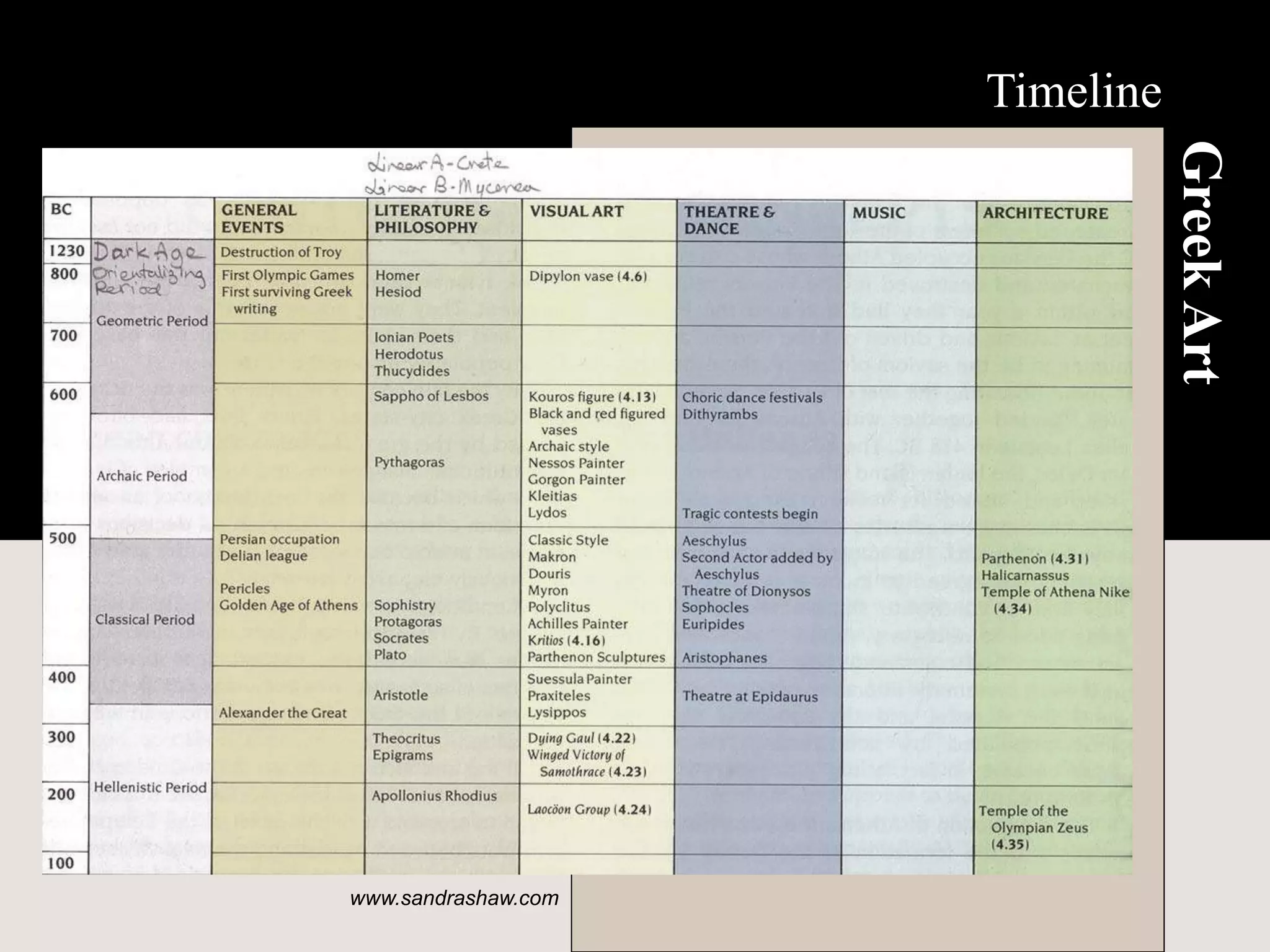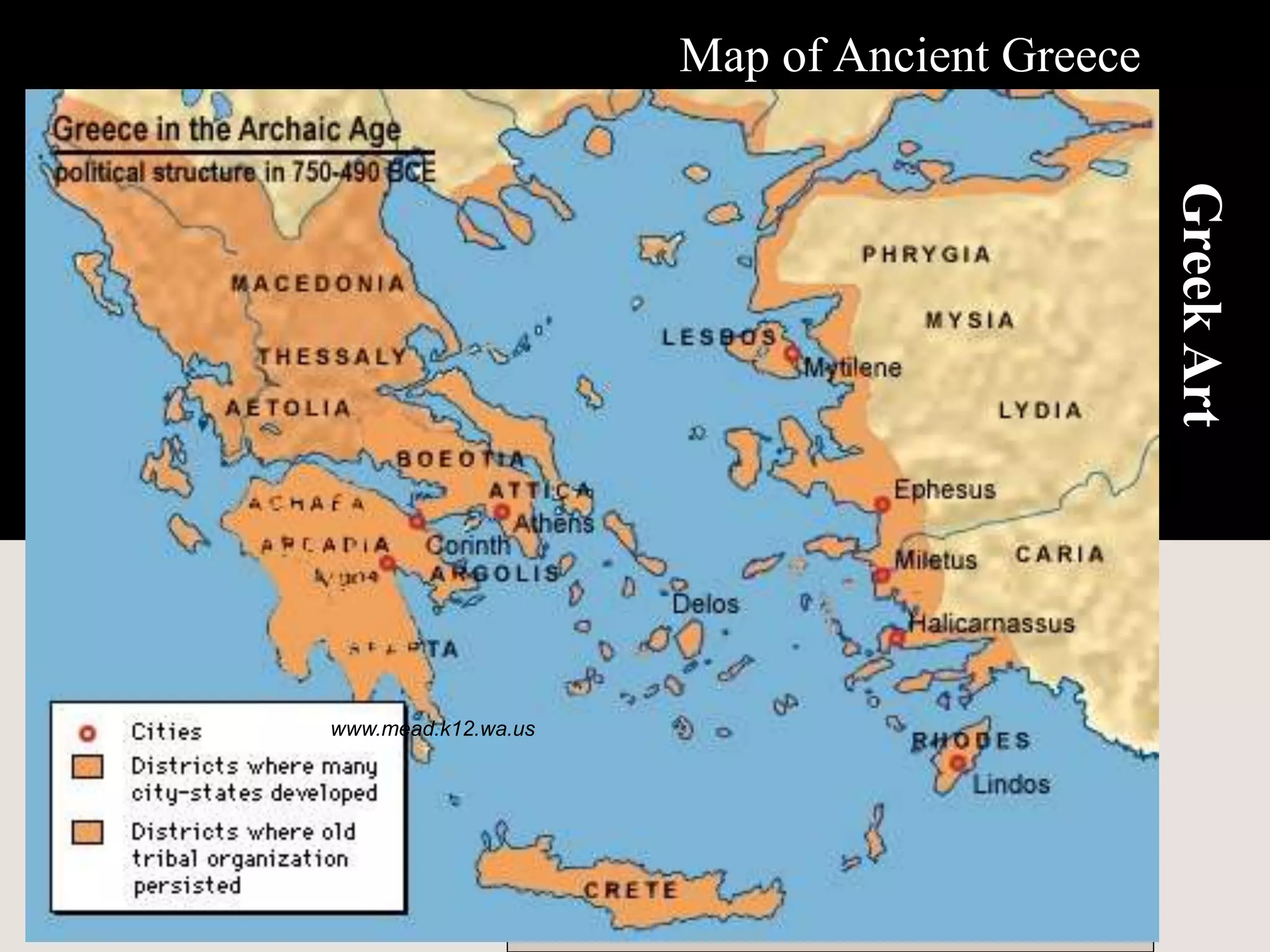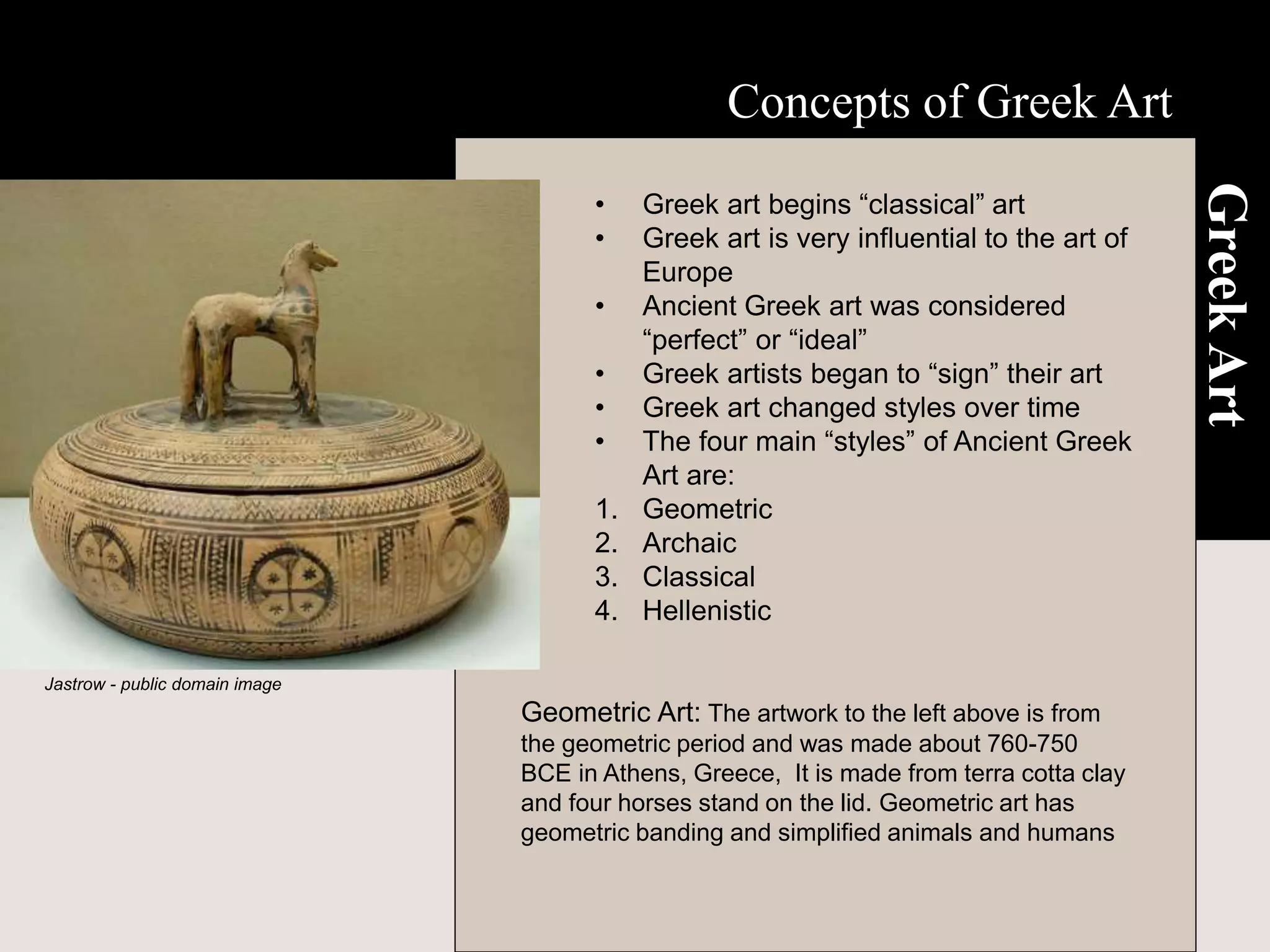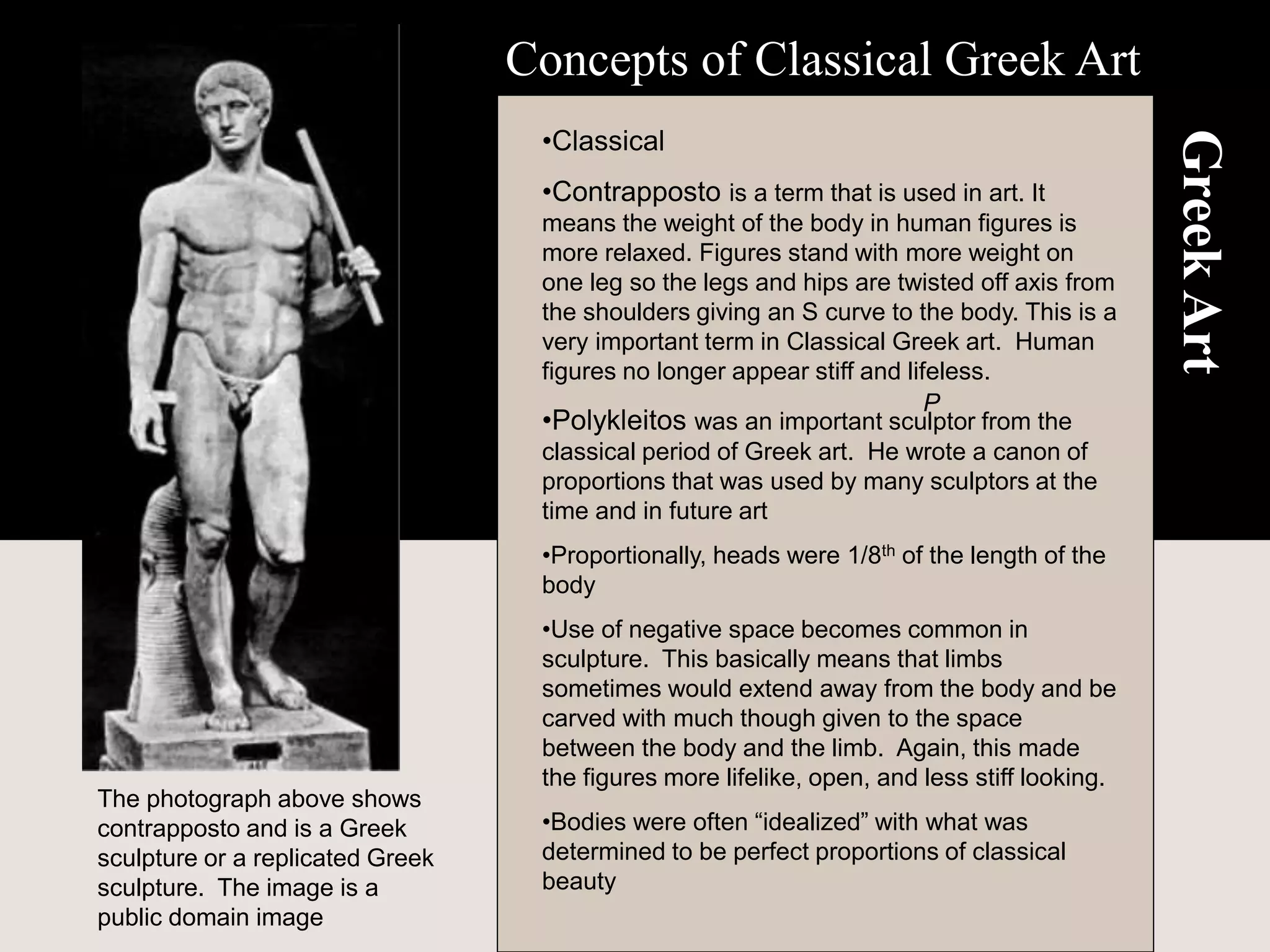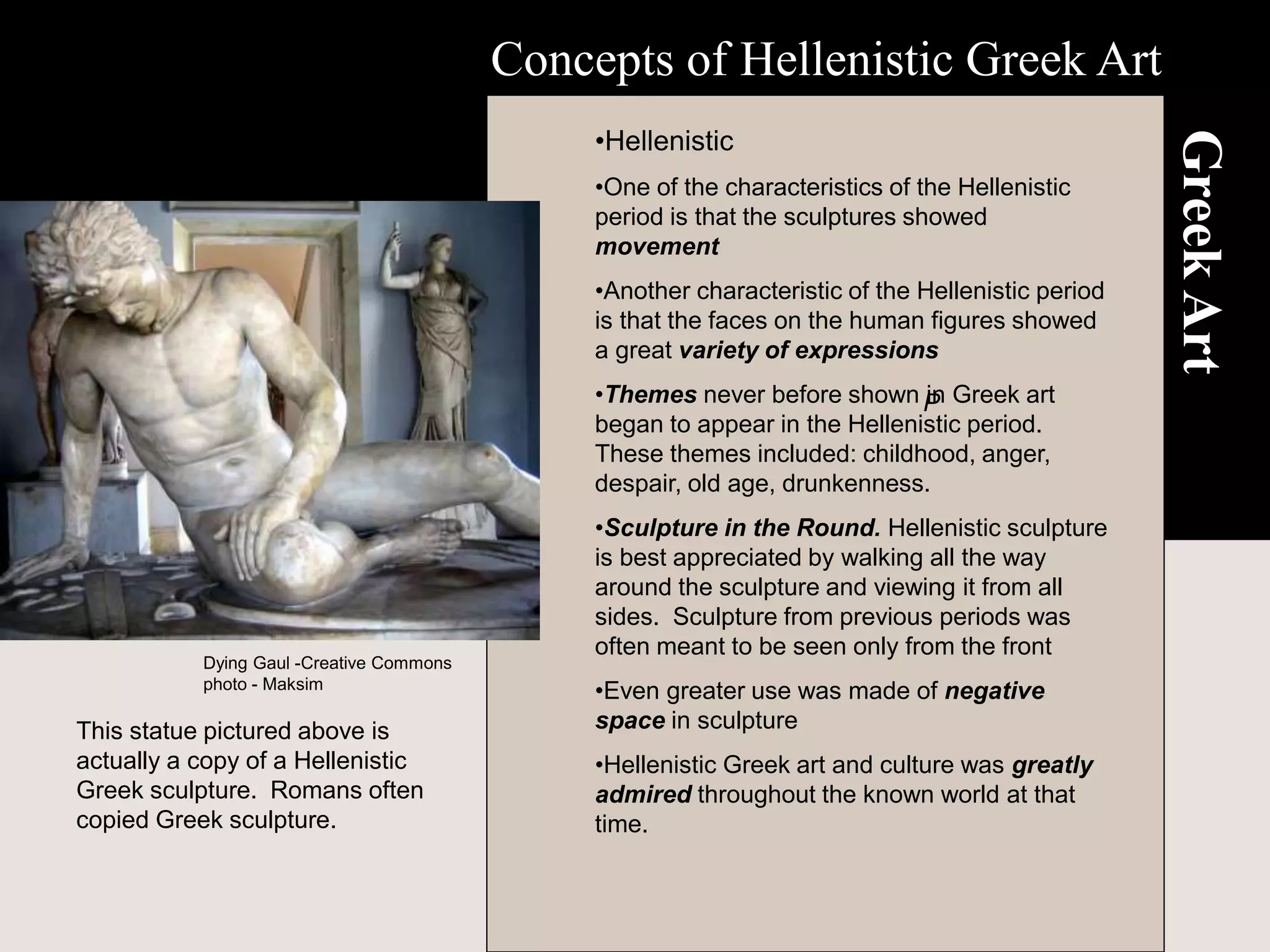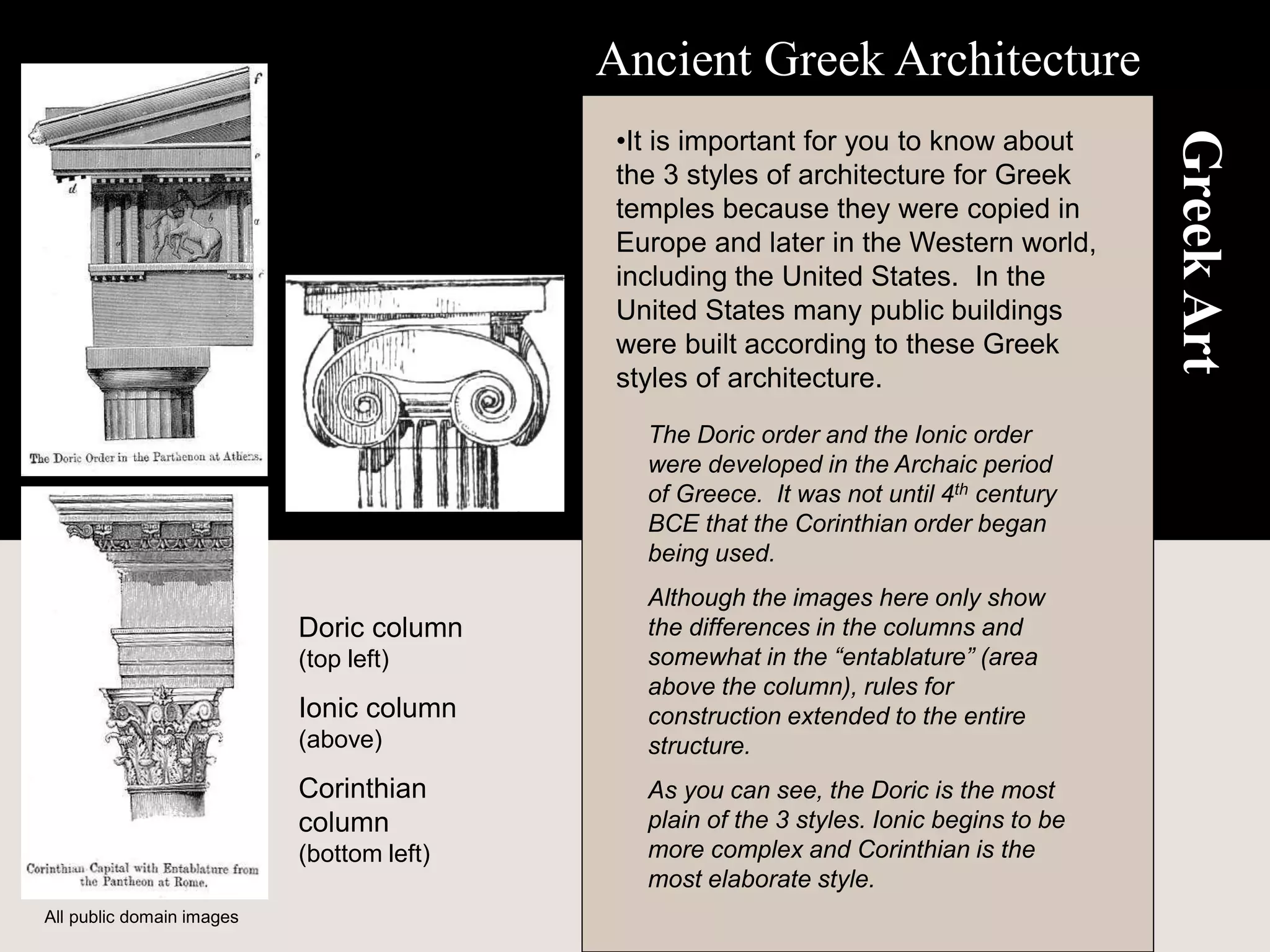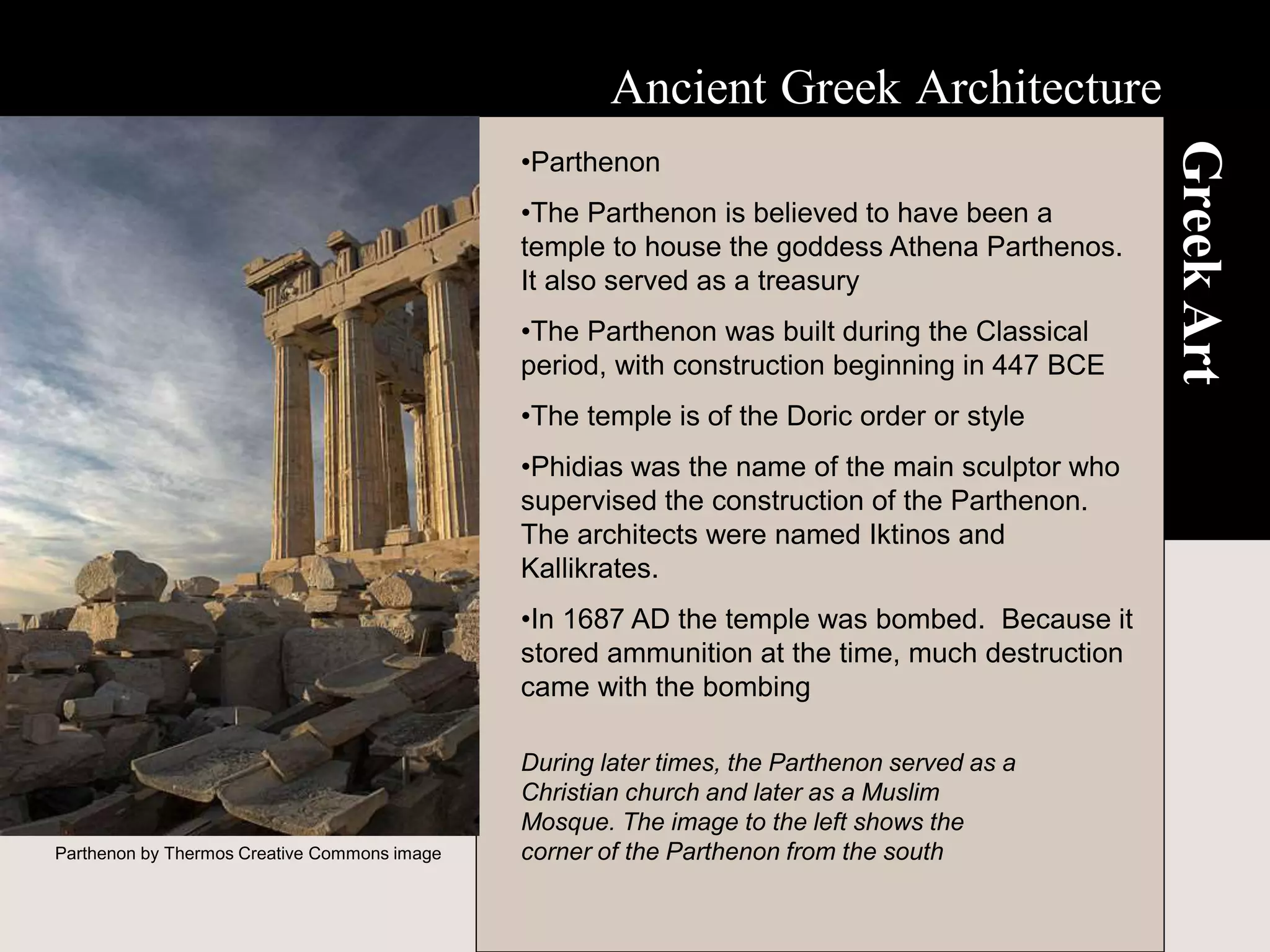Greek art began around 760 BCE and progressed through the Geometric, Archaic, Classical, and Hellenistic periods. The three main architectural styles of Greek temples were Doric, Ionic, and Corinthian columns. The Parthenon, built in Athens during the Classical period, is considered the greatest example of pure Greek architecture. Greek pottery styles included black figure pottery, where figures were painted in black on a red background, and red figure pottery, where the reverse occurred.

